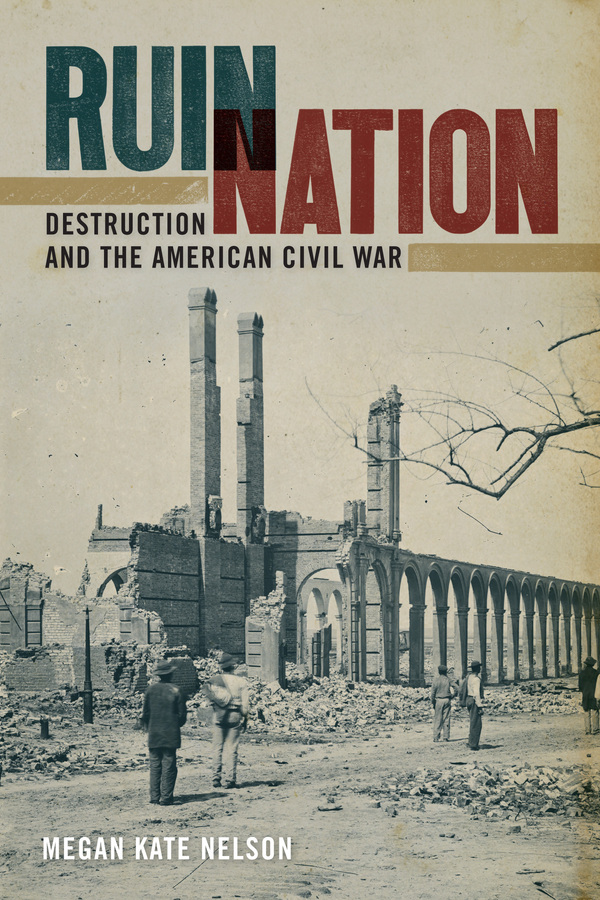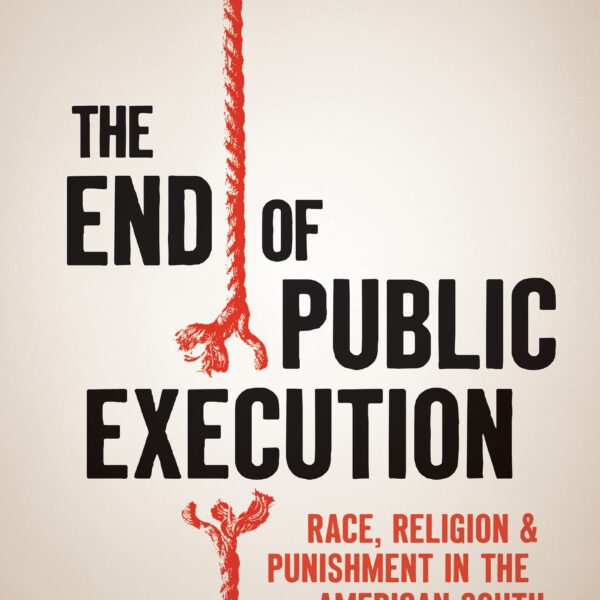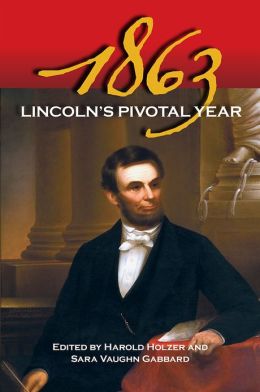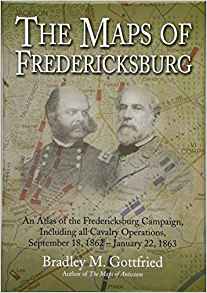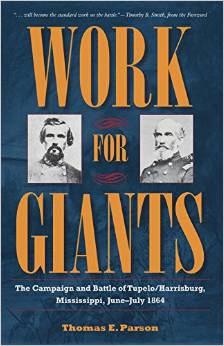For the last quarter century scholars have worked to recover an essential and missing element of Civil War history: a fuller understanding of the destruction brought by the war. Megan Kate Nelson’s Ruin Nation adds new dimensions to this genre of Civil War writing.
Explorations of destruction focus on topics that have been denied, neglected, or glossed over by previous generations of historians and other caretakers of American memory. The authors of destruction studies challenge many of the most popular books, films, battlefield displays, reenactments, and memorials of the Civil War, pulling back the curtains to reveal a war more horrifying, chaotic, and brutal than most Americans have ever confronted before.
Destruction, of course, has appeared in representations of the Civil War since the time of the war itself. Walt Whitman and Ambrose Bierce chronicled human devastation at first hand; Stephen Crane, Margaret Mitchell, and many novelists have imagined it since. The theme of destruction, by contrast, has taken scholarly shape more recently. Michael Fellman’s Inside War in 1989 and Charles Royster’s Destructive War in 1991 struck early and powerful blows. Books by Franny Nudelman, Stephen Ash, Harry Stout, George Rable, Anne Rubin, and others have exposed the destructive power of everything from religion to guerilla warfare, from political infighting to struggles between men and women. In 2007, Drew Faust’s This Republic of Suffering brought the study of destruction, in the most elemental form of death and dying, to a large and fascinated audience. Recent work by Jim Downs and Thavolia Glymph tells of suffering among the freedpeople, of the disease, neglect, and abuse overlooked in stories of the coming of freedom. The historical memories of the Civil War in the decades following Appomattox have been analyzed for their evasions, fables, and fabrications, their roles in covering over slavery and racial injustice. Collectively, these studies of destruction have given us a Civil War far more disheartening—and far more accurate—than most Americans have previously reckoned with.
Megan Kate Nelson’s book embodies several traits of this genre of Civil War history. It gravely and eloquently documents the breadth and the depth of ways the United States was damaged by the war. It analyzes the ruins of cities and the ruins of homes, the devastation of forests and the devastation of men’s bodies. Nelson examines destruction squarely and without flinching. She has undertaken remarkable primary research and offers powerful stories as well as revealing interpretations of images.
Nelson provides sobering numbers. She reminds us that a million men were wounded in the Civil War, that three-quarters of all operations in the war involved amputations, and that 40,000 men lost a limb through such operations. In an innovative environmental history, Nelson tells us that two million trees were consumed by the conflict. She reminds us that we can never glimpse the scale of physical property destroyed in the war, but points out that 22,000 white and black southerners came before the Southern Claims Commission in the 1870s to attest that they had always been for the Union and had lost property; the multiplier of those whites loyal to the Confederacy makes the amount of property lost truly staggering.
Nelson is not out simply to measure and expose destruction, however, but to interpret its meaning, to bring the eye of a cultural historian to her work. Nelson does not take a stand in the long-running argument over the degree to which the Civil War was “total” or “hard.” For her, it is enough that Americans felt the war’s destruction from its earliest days to its last. Nelson shows that the Civil War became “total” not so much by the extent of its physical destruction as by the emotional enlistment of the entire populations of the North and South. She shows that “wartime ruins wielded an emotional and imaginative power far out of proportion to their actual presence in the southern landscape” (243).
Nelson wants us, in fact, to think about the absence of ruins on our national landscape and in our national memory. The ruins of the Civil War have almost uniformly disappeared, and did so with great speed after the war’s end. Nelson reminds us of the ways that destruction was, to use her words, replaced, rebuilt, left to disintegrate, grubbed up, plowed under, grown over, replaced with prosthetics, died, and forgotten. Nelson urges us to undertake an archaeology of our own landscape, our own history, our own memory, reminding us that we can no longer accept at face value the manicured battlefields and sentimental histories earlier generations treasured and bequeathed to us.
Edward L. Ayers is President and Professor of History at the University of Richmond. He is the editor most recently of America’s War: Talking About the Civil War and Emancipation on Their 150th Anniversaries, published for the American Library Association and the National Endowment for the Humanities.
